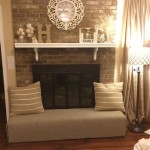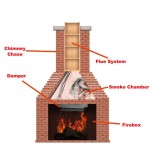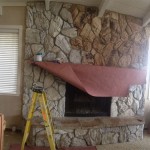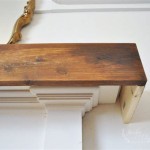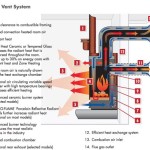Fireplace Portland Oregon: A Guide to Choices and Considerations
Portland, Oregon, like many cities in the Pacific Northwest, experiences cool, damp winters, making fireplaces a desirable feature in homes. The fireplace in Portland isn't just a source of heat; it's often a focal point, contributing to the ambiance and overall character of a living space. Choosing the right fireplace involves considering factors from fuel type and efficiency to aesthetics and local regulations.
This article will explore the various types of fireplaces available in the Portland market, the key points to consider when selecting one, and provide insights into local codes and installation considerations. The goal is to provide a comprehensive overview to help residents of Portland make informed decisions regarding fireplaces for their homes.
Types of Fireplaces Available in Portland
The Portland market offers a diverse range of fireplaces, each with its own set of advantages and disadvantages. Understanding these differences is crucial in selecting a fireplace that aligns with individual needs and preferences. The primary types of fireplaces available include wood-burning, gas, electric, and pellet fireplaces.
Wood-Burning Fireplaces: These are the traditional choice, offering a classic aesthetic and the authentic crackling sound and smell of burning wood. They can be either masonry fireplaces built from brick or stone, or factory-built fireplaces, which are typically metal fireboxes enclosed within a decorative surround. Wood-burning fireplaces require a readily available source of firewood and regular maintenance, including chimney cleaning, to prevent the buildup of creosote, a flammable byproduct of wood combustion. Modern wood-burning fireplaces are designed to be more efficient than older models, often incorporating features such as air controls and insulated fireboxes to improve heat output and reduce emissions. However, they still typically have lower efficiency ratings compared to gas or pellet fireplaces due to heat loss through the chimney. Regulations on wood-burning fireplaces in Portland have become more stringent over time, with restrictions on burning during certain air quality episodes to minimize pollution. It's essential to check with the local authorities regarding current regulations prior to installation or use.
Gas Fireplaces: Gas fireplaces offer convenience and ease of use, operating on natural gas or propane. They can be easily turned on and off with a switch or remote control, providing instant heat. Gas fireplaces come in various styles, including traditional log sets, contemporary linear designs, and freestanding stoves. Venting options include direct vent, which vents directly to the outside through a wall or roof, and vent-free (also known as ventless), which do not require a chimney. While vent-free fireplaces can be easier to install, they are subject to specific regulations and may not be suitable for all homes due to concerns about indoor air quality. Direct vent fireplaces are generally considered safer and more efficient, as they draw combustion air from outside and exhaust gases directly outside, preventing the buildup of carbon monoxide in the home. Gas fireplaces offer high efficiency ratings compared to wood-burning fireplaces, typically ranging from 70% to over 90%, depending on the model. They require professional installation by a qualified gas fitter and regular servicing to ensure safe and efficient operation.
Electric Fireplaces: Electric fireplaces offer the ultimate in convenience and ease of installation, requiring only a standard electrical outlet. They use electric heating elements to generate heat and often feature realistic flame effects created by LED lights and reflective surfaces. Electric fireplaces are available in various styles, including wall-mounted units, freestanding units, and inserts that can be placed in existing fireplace openings. They are a popular choice for apartments, condominiums, and homes where installing a gas line or chimney is not feasible. Electric fireplaces are highly efficient, converting virtually all electricity into heat, but their heat output is typically lower compared to gas or wood-burning fireplaces. They are primarily used for supplemental heating and aesthetic purposes, rather than as a primary heat source. Electric fireplaces are relatively low maintenance and do not produce emissions, making them an environmentally friendly option. However, they do increase electricity consumption and therefore electricity bills.
Pellet Fireplaces: Pellet fireplaces burn wood pellets, small, compressed cylinders made from wood waste. They offer a balance of convenience and efficiency, providing a renewable heat source with relatively low emissions. Pellet fireplaces require an electrical connection for the auger that feeds pellets into the firebox and for the exhaust fan that vents combustion gases outside. They typically have a hopper that holds a supply of pellets, which need to be refilled periodically. Pellet fireplaces offer high efficiency ratings, often exceeding 80%, and produce less ash compared to wood-burning fireplaces. However, they require a dedicated venting system and regular maintenance, including cleaning the burn pot and ash removal. The cost of wood pellets can fluctuate depending on supply and demand, and the reliance on electricity for operation means they won't work during a power outage unless a backup power source is available.
Key Considerations When Choosing a Fireplace in Portland
Selecting the right fireplace for a Portland home requires careful consideration of several factors. These factors include heating needs, space constraints, fuel availability, aesthetic preferences, and budget. A thorough assessment of these aspects is essential to ensure satisfaction with the chosen fireplace and its long-term performance.
Heating Needs and Efficiency: The primary purpose of a fireplace is to provide supplemental or primary heating. The size of the space to be heated and the desired temperature level will influence the required heat output of the fireplace, typically measured in British Thermal Units (BTUs). Larger spaces require higher BTU ratings. Efficiency ratings, expressed as a percentage, indicate how effectively the fireplace converts fuel into usable heat. Higher efficiency ratings translate to lower fuel consumption and reduced heating costs. Consider the specific heating needs of the home and choose a fireplace with an appropriate BTU rating and efficiency rating. For example, if the fireplace is intended as a primary heat source, a high-efficiency gas or pellet fireplace might be the best choice. If it's primarily for supplemental heat and ambiance, an electric fireplace may suffice. Wood-burning fireplaces, while offering a classic aesthetic, typically have lower efficiency than gas or pellet models.
Space Constraints and Ventilation: The available space and existing ventilation system will significantly impact the choice of fireplace. Wood-burning and gas fireplaces require a chimney or venting system to safely exhaust combustion gases. Older homes may already have a chimney that can be used for a new fireplace, while newer homes may require the installation of a new venting system. Direct vent gas fireplaces offer more flexibility in installation, as they can be vented through a wall or roof. Electric fireplaces do not require venting and can be installed in virtually any room with an electrical outlet. The size of the fireplace and the clearance requirements around it must be considered to ensure safe operation and prevent fire hazards. Check local building codes for specific regulations regarding fireplace clearances and venting requirements. Additionally, consider the aesthetic impact of the fireplace on the room's layout and décor. A large, imposing fireplace may not be suitable for a small room, while a sleek, modern fireplace could complement a contemporary living space.
Fuel Availability and Cost: The availability and cost of different fuels will influence the long-term operating expenses of the fireplace. Wood-burning fireplaces require a reliable source of firewood, which can be purchased or harvested. However, the cost of firewood can vary depending on the season and availability. Gas fireplaces require a connection to a natural gas line or propane supply. Natural gas is typically less expensive than propane, but not all homes have access to a natural gas line. Electric fireplaces use electricity, which can be relatively expensive depending on local utility rates. Pellet fireplaces require wood pellets, which are typically purchased in bulk. The cost of wood pellets can fluctuate depending on market conditions. Consider the long-term fuel costs associated with each type of fireplace and choose a fuel source that is readily available and affordable. Also, keep in mind that the environmental impact of each fuel source can differ, with wood and pellets being renewable resources, while natural gas and propane are fossil fuels.
Aesthetic Preferences and Style: A fireplace often serves as a focal point in a room, so aesthetic preferences are important. Fireplaces come in a wide variety of styles, from traditional to contemporary, to match different architectural designs and personal tastes. Wood-burning fireplaces often feature a rustic or traditional look, with brick or stone surrounds. Gas fireplaces can be designed to mimic the look of a traditional wood-burning fireplace or feature a sleek, modern aesthetic with linear burners and glass media. Electric fireplaces offer a wide range of styles, from realistic log sets to abstract flame effects. Consider the overall style of the home and choose a fireplace that complements the existing décor. Take into account the color, texture, and materials of the fireplace surround and the design of the firebox or burner. It's helpful to browse through online galleries or visit fireplace showrooms to get ideas and inspiration.
Local Codes and Installation Considerations in Portland
Installing and operating a fireplace in Portland, Oregon, is subject to local building codes and regulations. These codes are designed to ensure the safety of residents and minimize environmental impact. It's essential to be aware of these regulations before installing a fireplace to avoid potential fines or delays.
Building Permits and Inspections: In most cases, installing a new fireplace or modifying an existing one requires a building permit from the City of Portland. The permit process involves submitting plans and specifications to the city for review and approval. The city will inspect the installation to ensure it complies with building codes and safety regulations. Failure to obtain a permit can result in fines and delays. It's advisable to hire a licensed contractor who is familiar with local building codes to handle the permit process and ensure proper installation. The permit application will typically require details about the fireplace type, fuel source, venting system, and clearances. The inspector will check for proper installation of the venting system, gas connections, and electrical wiring. They will also verify that the fireplace meets the required clearances from combustible materials.
Wood-Burning Fireplace Regulations: Due to concerns about air quality, Portland has specific regulations regarding the use of wood-burning fireplaces and stoves. During periods of poor air quality, such as during inversions or wildfires, the city may issue burn bans, prohibiting the use of wood-burning appliances. Some areas of Portland may have stricter regulations on wood-burning fireplaces, such as restrictions on the type of wood that can be burned or requirements for certified low-emission wood stoves. Residents are advised to check with the local air quality agency for current burn ban status and regulations. It's also important to burn only dry, seasoned wood to reduce emissions. Wet or green wood produces more smoke and creosote, which can contribute to air pollution and increase the risk of chimney fires. Regularly cleaning the chimney is essential to prevent creosote buildup and maintain safe operation.
Gas Fireplace Regulations: Gas fireplaces must be installed by a qualified gas fitter who is licensed and insured. The installation must comply with the National Fuel Gas Code (NFGC) and local plumbing codes. Proper venting is crucial to prevent carbon monoxide poisoning. Direct vent fireplaces must be vented directly to the outside, while vent-free fireplaces may be subject to restrictions. The gas fitter will ensure that the gas connections are properly sealed and tested for leaks. The fireplace must be properly grounded to prevent electrical hazards. Regular servicing of gas fireplaces is recommended to ensure safe and efficient operation. This includes cleaning the burner, inspecting the venting system, and testing for gas leaks.
Venting Requirements: Proper venting is essential for all fireplaces that burn fuel, including wood, gas, and pellet fireplaces. The venting system must be designed and installed according to manufacturer's specifications and local building codes. Chimneys for wood-burning fireplaces must be constructed of masonry or approved metal chimney systems. Gas fireplaces require either a direct vent or a B-vent system, depending on the model. Pellet fireplaces require a dedicated venting system designed for pellet stoves. The venting system must be properly sized to ensure adequate draft and prevent backdrafting of combustion gases into the home. Regular inspection and cleaning of the venting system are essential to prevent blockages and maintain safe operation. A qualified chimney sweep can inspect the chimney for cracks, leaks, and creosote buildup and perform necessary cleaning and repairs.

Portland Fireplace Everything Your Hearth Desires

Portland Oregon Fireplace Installation Fireplaces

Indoor Outdoor Gas Fireplaces Portland Or Nw Natural Appliances

Gas Fireplace Inserts Portland Oregon Hometown Hearth And Grill

Indoor Outdoor Gas Fireplaces Portland Or Nw Natural Appliances

Fireplace Inserts Portland Oregon Accessories Or

Fireplace Facelifts Portland Or American Chimney

Portland Fireplace Or Regency

Indoor Outdoor Gas Fireplaces Portland Or Nw Natural Appliances

All Fuel Installation Portland Oregon Fireplace Accessories
Related Posts

